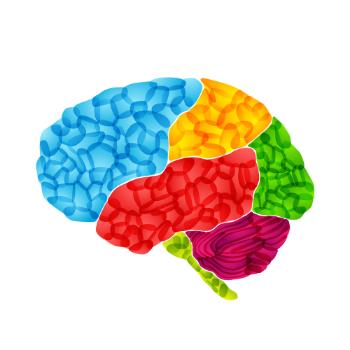Functional connections in the brain change over time in ways that are only now beginning to be appreciated. In the field of neuroscience, there is a new approach to studying the brain known as human connectomics. This dynamic model of studying the brain and its moment-to-moment variations is what researchers at the University of Miami (UM) College of Arts & Sciences Department of Psychology present in a new study published in the journal Human Brain Mapping.
 |
Dr. Lucina Uddin, an assistant professor of psychology in the UM College of Arts & Sciences, explains: “Human connectomics tries to understand how connections between brain regions give rise to sophisticated behaviors. The reason this is interesting is because it’s a departure from traditional cognitive neuroscience, where the goals were to map cognitive functions to individual brain structures, and infer what process each brain region was responsible for.”
As researchers move towards models of studying the brain as a complex network, Uddin says questions about the brain continue to linger. “Even within the framework of connectomics, we still have questions that are hard to grapple with, such as, how can some brain regions be involved in so many different cognitive processes?” she adds.
The part of the brain Uddin and postdoctoral fellow Dr. Jason Nomi focus on in the study is the insular cortex (or insula), a region engaged when people are performing a variety of cognitive tasks such as paying attention, experiencing emotion, and feeling pain. Uddin and Nomi are looking at the dynamic connections in the brain and how these connections within the insula change from second to second.
The approach they use to study these moment-to-moment variations of the insula and its subdivisions is a method called, “dynamic functional network connectivity” (d-FNC). Whereas “static functional network connectivity” (s-FNC) provides researchers with an overall, average look at brain function throughout an fMRI scan, d-FNC allows for the identification of how connections between brain areas change over time.
According to Nomi, previously researchers were only interested in average connections across the brain. “Essentially,” he says, “it was thought that deviations from that average profile were just noise; yet, only recently have researchers come to understand that all of these slight variations are important. What we found was that the average functional connections of the insula suggest that its subdivisions acted independently, but changes from that average functional profile showed that its subdivisions sometimes worked together. This may help to explain why the insula is so flexible in terms of its involvement in many different mental processes.”
The other researchers who participated in the study entitled, “Dynamic Functional Network Connectivity Reveals Unique and Overlapping Profiles of Insula Subdivisions,” include Kristafor Farrant at the University of Miami, and electrical engineers with the University of New Mexico and The Mind Research Network – Eswar Damaraju, Srinivas Rachakonda, and Vince D. Calhoun, who created the d-FNC method.
“We could not have done it without their collaborative efforts,” said Uddin.
“The main reason for doing this study is that we want to identify how the insula is working in the normal population and then using the research as a framework so we can see how clinical populations differ in the function of this brain area,” adds Nomi.
At the College of Arts & Sciences, Uddin’s research focuses on brain connectivity and cognition in typical and atypical development, which includes children with autism.
“One of the theories we are testing is that the insula is less flexible in autism, which means you won’t see as many dynamic changes, and this might be related to the inflexible behaviors observed in children with the disorder. Often kids with autism are very rigid and want to stick to the same routine. We think this might have to do with reduced dynamics of the insula, which typically works to enable those flexible behaviors,” she said.
Currently, Uddin is collecting neuroimaging data from children with autism between the ages of 7 and 12 years to test this hypothesis. This project is funded by a grant from the National Institute of Mental Health (NIMH).
March 09, 2016

